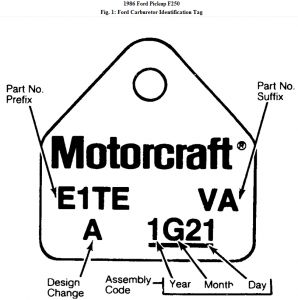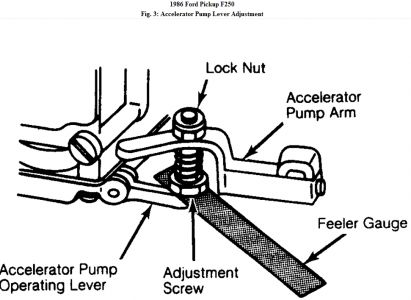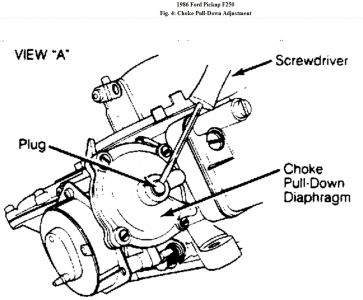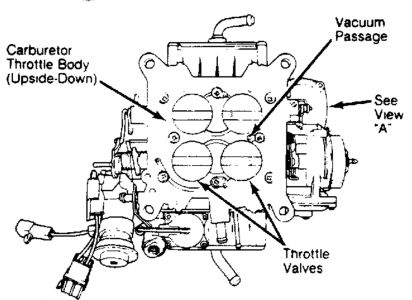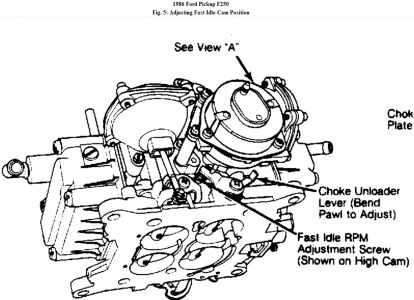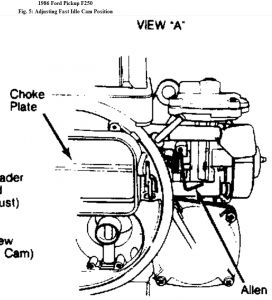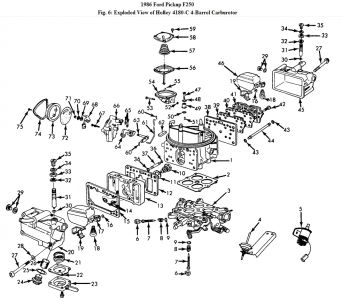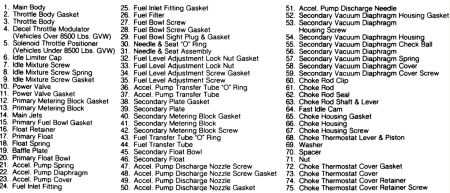How did it run with the mechanical pump? If not good, your carb may need a new accelerator pump. This gives a shot of fuel for take off. Which carb is on it and I will see if I can locate a diagram.
Here are the specs and testing info for the fuel pump. Mechanical, you electric should be set to deliver this pressure.
FUEL PUMP
NOTE: 5.0L MPFI models use electric fuel pumps and 5.8L 4-Bbl. Models use
mechanical fuel pumps. On 7.5L 4-Bbl. Models, the Hot Fuel Handling
application uses in-tank mounted electric fuel pumps. All other
applications use mechanical fuel pumps.
Mechanical Fuel Pump (Volume Test)
On 5.8L and 7.5L 4-Bbl. Models, remove air cleaner. Slowly disconnect fuel line at filter. Using
a suitable container (one pint minimum), place at end of disconnected fuel line. With high
tension wire disconnected from coil, crank engine 10 seconds. If fuel flow is within
specification, proceed to pressure test. If not, proceed to next step.
1.
If fuel flow is low, repeat test using remote vented can of gasoline. Remove fuel pump inlet
hose. Connect a length of fuel line hose to fuel pump inlet and insert other end into remote can
of gasoline. If fuel flow is within specification, problem is plugged intake fuel filter or a kinked,
leaking or plugged fuel line or hose.
2.
Mechanical Fuel Pump (Pressure Test)
Remove air cleaner. Connect suitable pressure tester to end of fuel line. Start engine and let run for at
least thirty seconds. Read pressure and if not within specification, replace fuel pump. Reinstall air
cleaner.
Electric Fuel Pump
On 5.0L MPFI models, disconnect fuel return line at fuel rail. Connect hose to container. Connect
pressure gauge at diagnostic valve on fuel rail. Disconnect wiring connector at fuel tank and apply 12
volts to pump with jumper wire.
On 7.5L 4-Bbl. Models, disconnect fuel line just before the vapor separator unit. Connect a hose from
fuel line to a suitable container. If fuel flow is not within specification, electrically check fuel pump.
If still not within specification, replace pump-sender assembly.
FUEL PUMP SPECIFICATIONS
Application Specification
Electric Fuel Pumps
5.0L MPFI
Pressure (1) 39 psi (2.7 kg/cm2 )
Volume (1) 1 pint (.5L) in 30 seconds
7.5L 4-Bbl.
Pressure (1) 4.3 psi (.30 kg/cm2 )
Volume (1) 1 pint (.5L) in 20 seconds
Mechanical Fuel Pumps
Pressure 6.0-8.0 psi (.42-.56 kg/cm2 )
TUNE-UP - V8 -1986 Ford Pickup F250 Page 1 of 2
4/28/2010
Application Specification
Volume 1 pint (.5L) in 20 seconds
(1) Delivery capability averages.
TUNE-UP - V8 -1986 Ford Pickup F250 Page 2 of 2
4/28/2010
Tuesday, March 24th, 2020 AT 2:55 PM
(Merged)
